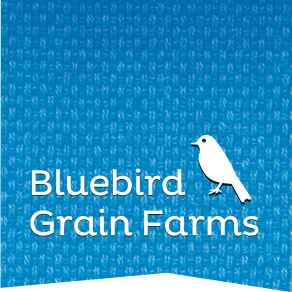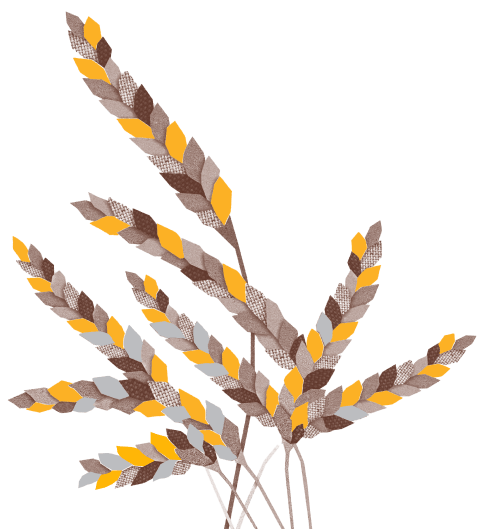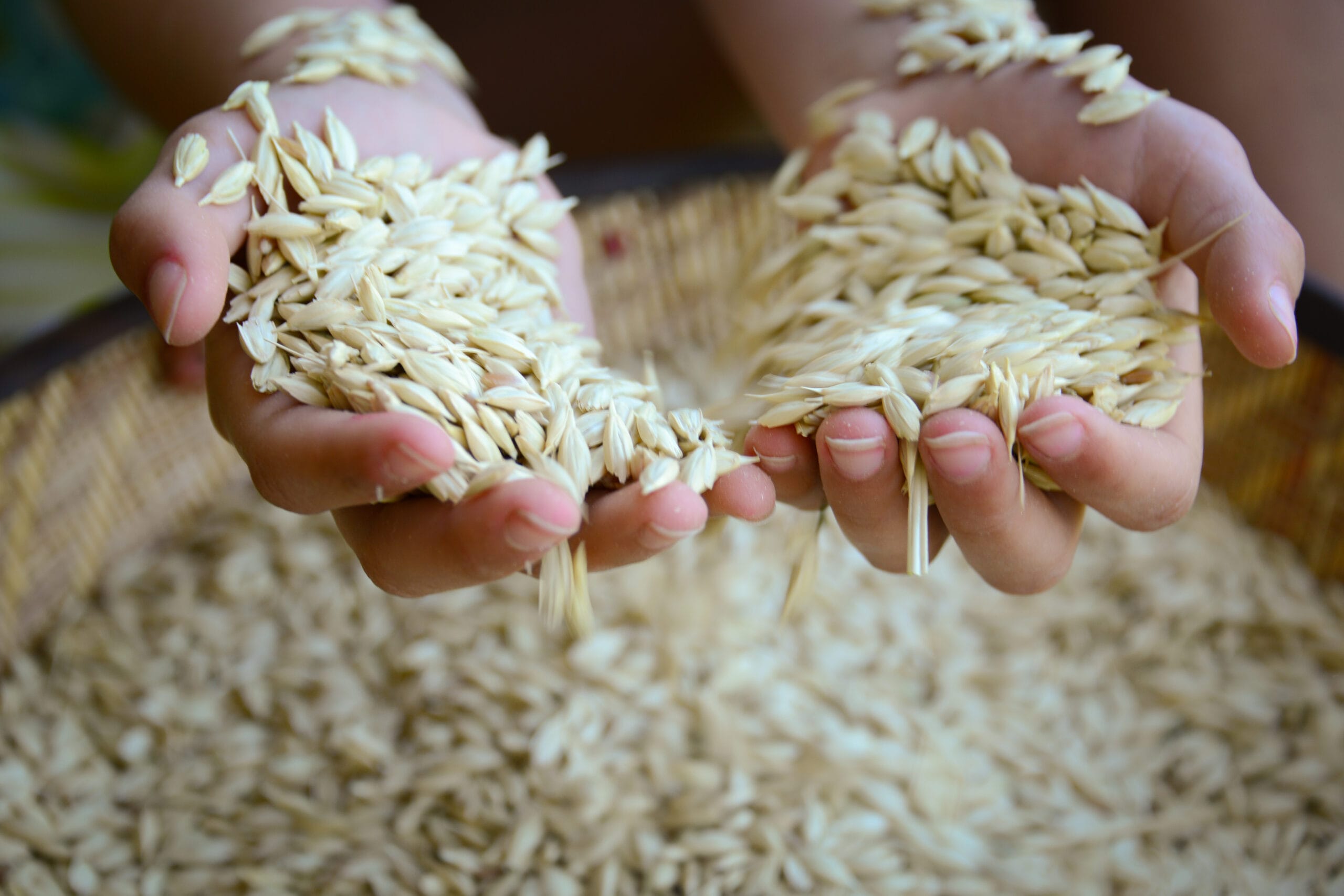
Our Grains
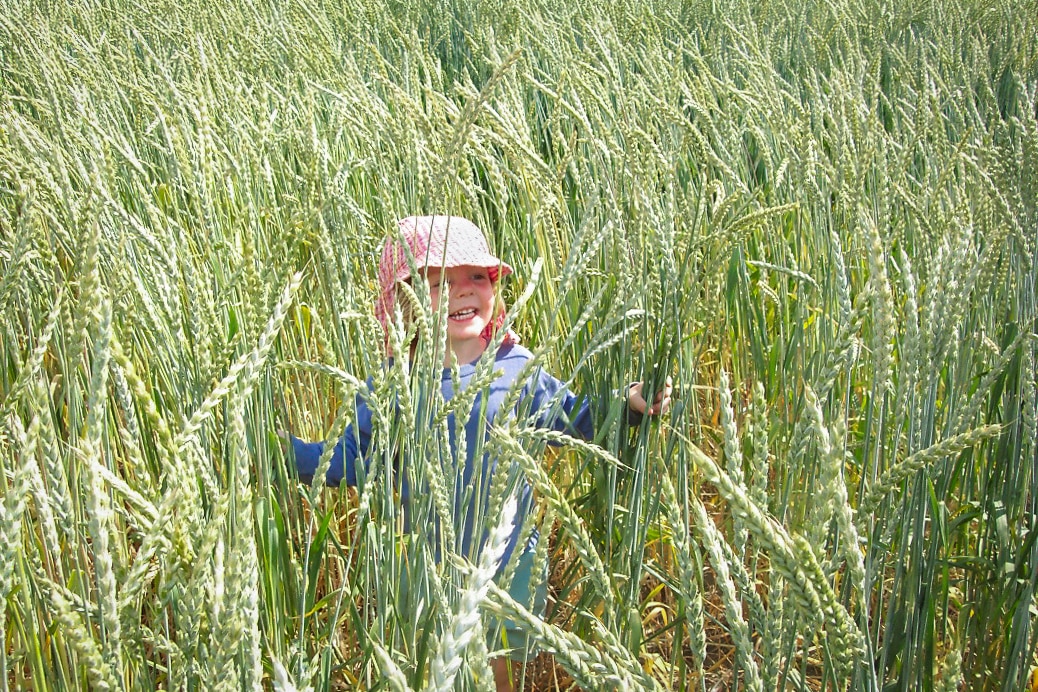
At Bluebird Grain Farms, our Emmer, Einkorn, and Spelt are planted and harvested in the hull. For thousands of years, these ancient wheats propagated themselves this way. Like most fruits and vegetables, the “skin” or outside of the food holds the most nutrition. In the case of our ancient wheats, the hulls are a nutrient pack necessary to support the plant’s life, so we want it intact for the berries at planting. Additionally, when we harvest the grains with the hull intact, this extends storage life as the hulled grains don’t pack as densely as naked berries from modern wheats.
When it comes to hulling these grains for consumption, we still do our best to hull them on an as-needed basis. The hull acts as sort of a time capsule: once opened, so begins that grain’s lifespan. When we say “fresh grains,” we mean grains whose hulls have been opened only a week or two before you purchase them, giving you the maximum in nutrition, flavor, and shelf stability. Additionally, when we de-hull the emmer, einkorn or spelt, we do this in a way where we are careful not to “skin” the actual kernel. If we damage or remove the bran – the outer surface of the actual grain kernel – then we have not only compromised its shelf life and freshness, but reduced the nutrition and flavor.
What separates our grains from what you can find in your grocery store?
You may have heard our products referred to as Farro, an Italian term for ancient hulled wheat. The three hulled wheats are einkorn, emmer, and spelt, and before Bluebird began the “emmer project,” most of these grains sold in the USA were from Europe and were always pearled or “semi-pearled.” Pearling the grain means that the grain has been scarified during the dehulling process and thus has lost the outer integrity of the kernel and no longer is a “whole grain.” Pearled grain or “skinned grain” oxidizes much faster than whole grain and is not nearly as shelf-stable. Pearled grain cooks much quicker than a whole grain, but not only does it lack the nutrition, it also loses flavor and will not hold up after cooking.
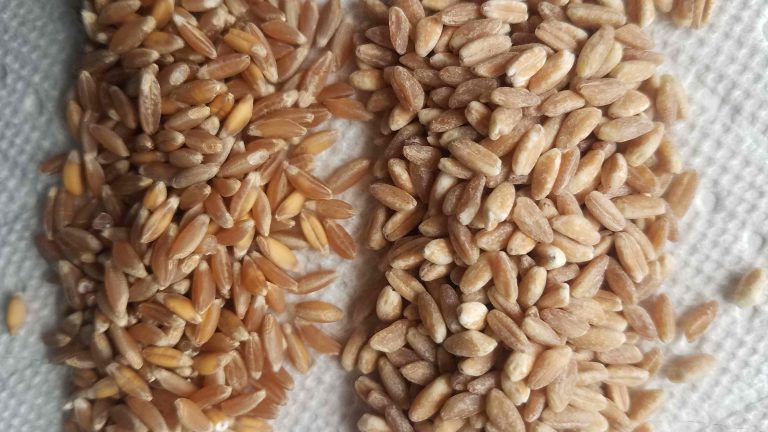
At Bluebird we go to great lengths not only to grow hulled grains in nutrient dense soils, but to then process them in a fashion that keeps all that integrity intact. Organically! Why shave off the nutrients that we work so hard to produce? The photo above exhibits the deep rich color of our whole grain emmer farro (left), compared to a brand-name imported pearled farro with the bran and germ removed (right). You can see the red pigments in the Emmer (left), are the Carotenoid pigments, particularly β-carotene and lycopene, vital to maintaining health. β-carotene is known to quench singlet oxygen and can have potent antioxidant activity. Pearled grains have the outer layer of the grain (the nutrient pack) shaved off, exposing the grain to air, making it susceptible to rancidity. Our grains are processed carefully to keep the whole grain in tact to maximize the nutritional benefit for your health.

Emmer Farro (Emmer Wheat)
Plump and chewy, delicious hot or cold, superb in soups, pilafs and risottos, outstanding in pasta, breads and baking—if you’re new to Bluebird Emmer Farro, you’re in for a special treat. Emmer, Triticum dicoccum, known as farro in Italy, is an ancient ancestor of wheat. It is an incredibly versatile grain with a wonderfully full-bodied flavor and robust nutritional value. Emmer is high in protein—ranging up to 20%— and low in gluten with a chromosome count of 28 which makes it a great choice for people who are sensitive to more common, hybridized types of wheat.
Bluebird Emmer sets the gold standard for this unique gourmet grain. Our emmer is always 100% organic, nutrient dense, sun cured, and milled and packaged to order on our family farm. Our whole grain is a sproutable living seed and never pearled.
Emmer is one of the first cereals to be domesticated in Mesopotamia’s Fertile Crescent and was the primary wheat grown in Asia, Africa and Europe throughout the first 5,000 years of recorded agriculture, more than 17,000 years ago. Over the centuries, emmer was gradually abandoned in favor of more productive, hybrid varieties of durum wheat. By the beginning of the 20th century, higher-yielding wheat strains had replaced emmer almost everywhere, except in parts of Europe and Northern Africa, where Bluebird’s seed originated.
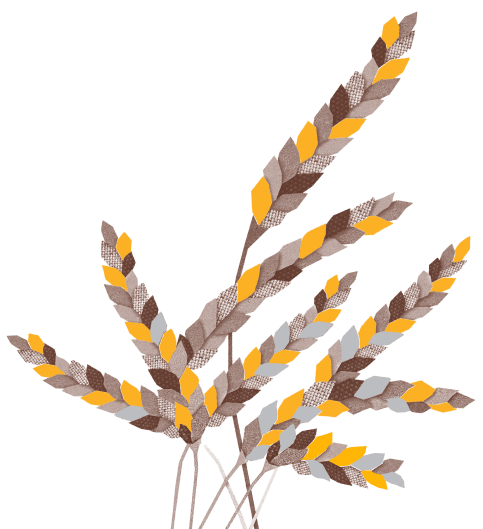
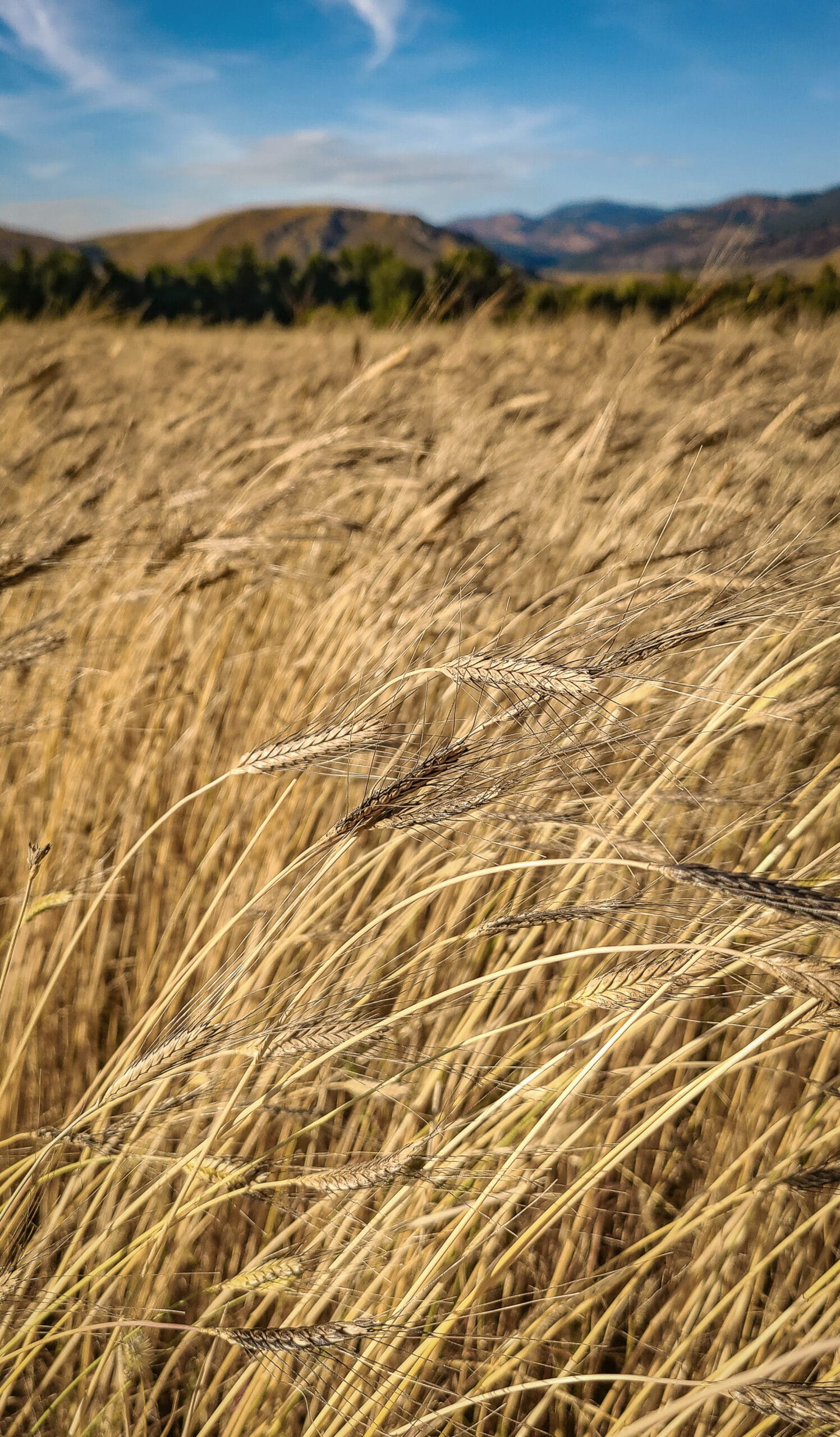
Einkorn Wheat
Introducing Bluebird Einkorn – the purest form of wheat, unaltered by modern hybridization. Revered as the original ancient grain, our einkorn is genetically pristine and retains the natural characteristics of its origins. Ideal for those with gluten sensitivities, Einkorn’s delicate gluten structure is gentle on the digestive system, making it the preferred choice for a wholesome, nutritious diet. Petite, soft and slightly sweet with faint vanilla tones, Use as a whole grain or mill into a soft buttery flour for wholesome breads. It makes the perfect replacement to any starch. Similar to Emmer, Einkorn is rich in protein, phosphorus, vitamin B6, potassium, antioxidants and amino acids. Einkorn is your perfect partner for healthy, delicious baking or cooking.
Einka® is a brand name for our whole grain Einkorn wheat products, grown from a pure genetic variety of Triticum Monococcum (never blended with other wheat products, hybridized or modified). With the growing pressures of large industry modifying and hybridizing seed to meet large-scale demands, a trademark on our Einkorn products is one way our small farm business can communicate and insure to our customers the standards and qualities that our products maintain.


Spelt
Spelt, scientifically known as Triticum spelta, embodies the essence of its ancestral precursors, blending evolutionary traits and botanical interplay. Among the trio of ancient wheats, it stands as the youngest, born from a cross between emmer and a wild grass. Like einkorn and emmer, spelt too has an outer husk that protects the kernel and has been a staple food in Europe for centuries, starting in the Bronze age.
Spelt is sweet and malty, and has a distinctive rounded shape, setting it apart from the robust rust-colored kernel of emmer, or petite blonde kernel of Einkorn. Spelt can be used in place of your common whole wheat bread flour, making it the favored ancient grain for yeast and sourdough breads. Like Einkorn and Emmer, Spelt’s low glycemic index makes it an excellent choice for those seeking lower gluten alternatives.
The variety of Spelt that we use at Bluebird has not been privatized or hybridized like some other varieties of spelt has been. The variety we use is a “public” variety that has excellent baking qualities.

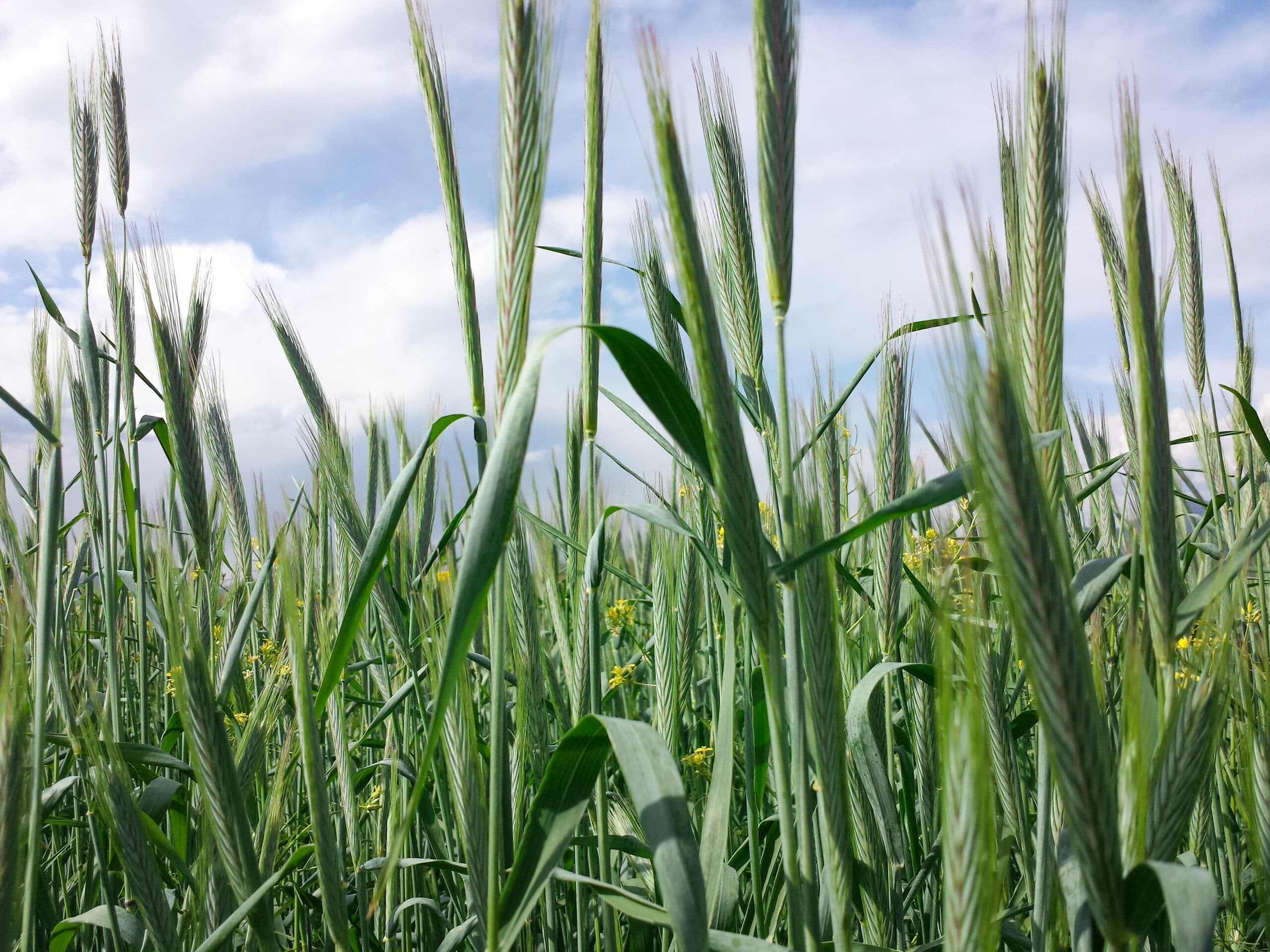
Heritage Rye
Tangy, earthy and satisfying, rye can be cooked whole, cracked as a cereal grain, or milled for breads. Blended, rye and emmer flours make a full-bodied, nutritious loaf of bread reminiscent of old-world baking.
Our Heritage Rye, Tetra Pectas, is a unique and rare variety rooted in Eastern Washington for over 100 years. We have not been able to source this variety anywhere else in the United States. Treebeard of Raintree farm of Tonasket, Washington, kept this variety alive for over 30 years before passing it along to us. Rye is not wheat, but closely related. Domesticated rye has been traced to Neolithic sites in Turkey. Rye may have been cultivated in central Europe as early as 1800-1500 B.C. Long seen as a weed in more desirable wheat crops, rye eventually gained respect for its ability to grow in areas too wet or cold for other grains. This has made it a traditional food in Northern Europe and Russia. Rye was also widely grown in colonial America.
Rye’s large, plump, steel- blue berry contains fiber both in its endosperm and bran. It has a lower glycemic index than modern wheat and is especially healthy for diabetics. The type of fiber in rye promotes a rapid feeling of fullness.

Bluebird Wheats
At Bluebird Grain Farms, we grow three varieties of wheat:
Sonora Heritage Soft White Wheat, a remarkable heirloom grain variety, has its origins rooted in North America’s agricultural history. Believed to have been first introduced to the Sonora region of Mexico by Spanish missionaries in the 17th century, it eventually made its way to the American Southwest. The wheat’s adaptability to arid climates and its delicious, soft-textured flour made it a staple crop for indigenous peoples and early settlers. Its enduring legacy as one of the oldest surviving wheat varieties in the Americas is a testament to its resilience and unique qualities.
Sonora Heritage Soft White Wheat is characterized by its distinctive pale beige to creamy-white kernels, a stark contrast to the bold red wheats more commonly found in the region. The wheat’s soft texture and mild, slightly sweet flavor make it an ideal choice for baking delicate pastries, cakes, and artisan bread. It has a higher protein than most soft wheats-13%. Sonora Wheat inspired the development of the flour tortilla in the late 1600’s in Sonora Mexico. It is also known for its low glycemic index, making it easier to digest for some individuals with gluten sensitivities. Farmers who cultivate Sonora Heritage wheat often appreciate its sustainable attributes, as it requires less water and is more resistant to pests than modern wheat varieties. This ancient grain’s resurgence in popularity reflects a growing interest in preserving heritage crops and reconnecting with traditional, region-specific agricultural practices.
Our Methow Hard Red Wheat, Triticum aestivum, originated from Northern Canada over 80 years ago. Our Methow Red wheat ranges from 12.5%-14.5% protein and has stronger-tasting tannin than white varieties of wheat. It is used as a whole grain berry for soups and salads or is milled to order as your classic “whole wheat bread flour.” A plump and chewy, high protein spring wheat berry with bitter undertones. Use in salads, soups or ground into whole wheat flour for yeast breads and other delicious baked goods. Its slightly bitter flavor gives bread a rich whole grain taste.
Our Pasayten Hard White, Triticum aestivum, has a close ancestry to Hard Red Spring wheat. A plump and round spring hard wheat berry with a mild gentle flavor and high protein content. Used in salads, soups or ground into whole wheat flour for yeast breads and baked goods. . It is attractive to bread bakers for its mild flavor and high protein/gluten content. White spring wheat has a slightly higher gluten content and softer endosperm than our Hard Red Wheat allowing it to “fleck” or mill in a fine grind. This property allows Hard White Wheat to have more all-purpose use in baking. We call it our “whole grain all-purpose flour.”
Shop Our Wheat Lines
Quality Flours
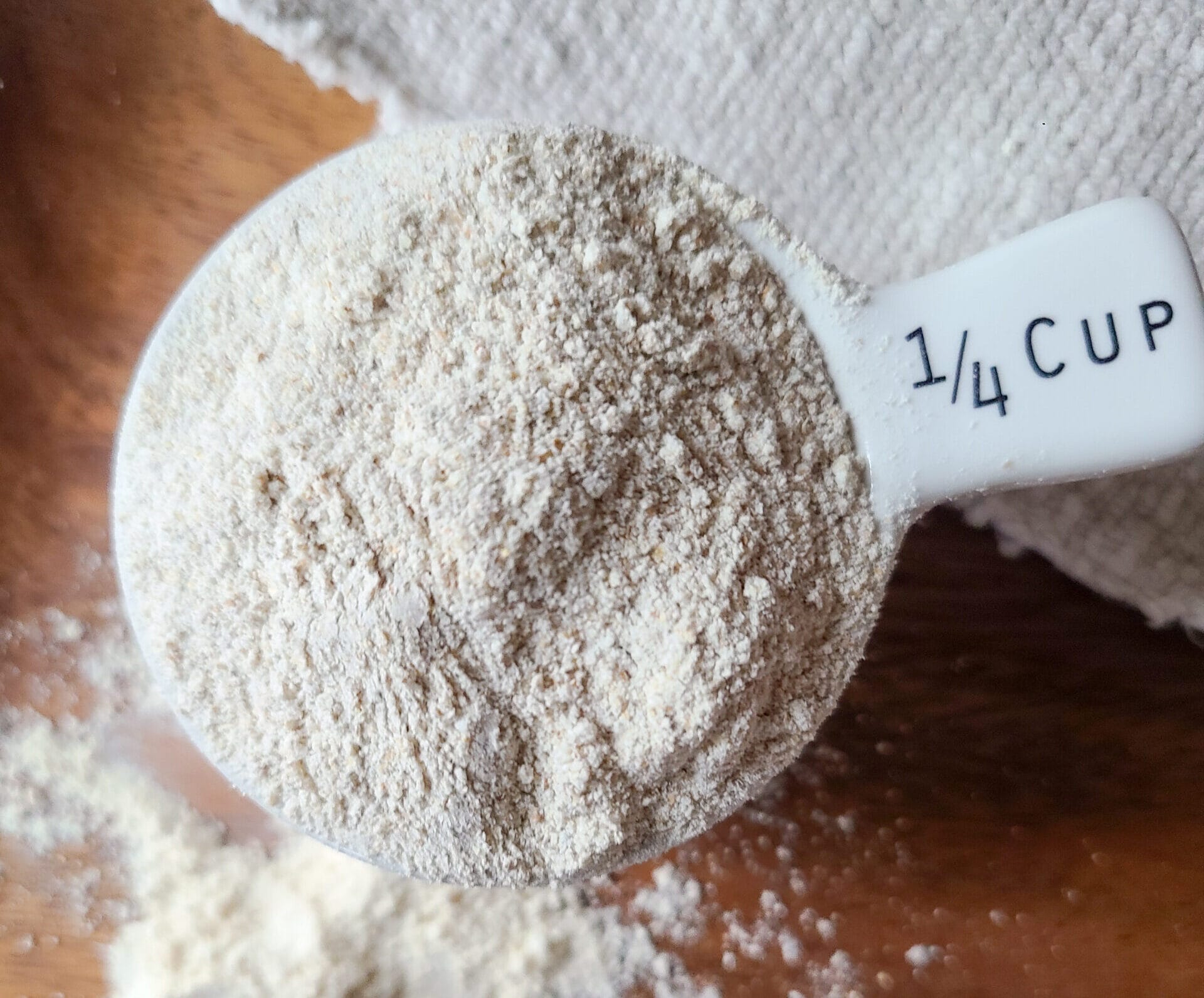
All our flours are milled to order, in our USDA organic processing facility so that you get only the freshest, whole grain flour. Each week, we mill our grains in small batches on our trusty hammermill, in various grinds depending on the type of flour that you order. Because we pride ourselves in delivering a 100% whole grain product, we do not sift our flours. This keeps all the nutrition in your food.
